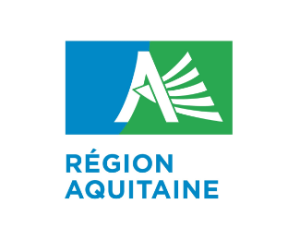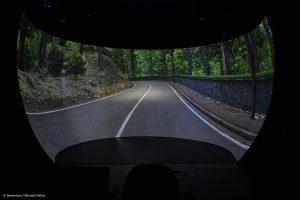The network is an essential element for the deployment and viability of virtual worlds in our daily lives. As collaborative experiences in XR become increasingly comprehensive and immersive, it is essential that the network infrastructure adapts to new uses: real-time collaboration around 3D, mixed environments, and metaverses.
The European SAFE-6G project, launched in 2024, is innovating in the field of 6G networks. Its goal is to create a trusted network capable of adjusting to the specific needs of each user. This advance is crucial for many XR use cases, which handle large volumes of often sensitive data.

Halfway through the project, Immersion looks back on its involvement in a video focusing on use cases:
XR use cases: industrial digital twins and immersive training
The European SAFE-6G project, funded by Horizon Europe, aims to create a 6G network focused on user trust. A chatbot collects users’ security needs, then the cognitive coordinator configures the network according to five functions: Security, Privacy, Safety, Resilience, and Reliability. Each function, managed by dedicated AI, adjusts the network accordingly, while an explainability module translates these settings into clear explanations that are accessible to all.
SAFE-6G paves the way for new XR uses. Immersion brings its expertise in collaborative immersive experiences to explore the benefits of this innovative approach.
“We advise 6G experts on the various requirements associated with this technology in terms of bandwidth, security, and interactivity: How should networks respond based on the uses and experiences being deployed? We are also exploring the combination of these 6G technologies with streaming and remote rendering technologies such as Cloud XR solutions, which allow a headset to be used as a simple viewer while the computing is offloaded to a more advanced machine.” explains Julien Castet, Director of Research and Innovation at Immersion.
- Use case #1: Industrial digital twin
The digital twin is a powerful tool for managing and planning the evolution of a production line, or even an entire factory. XR allows users to collaborate remotely around this virtual replica to monitor operations or solve problems from a distance.
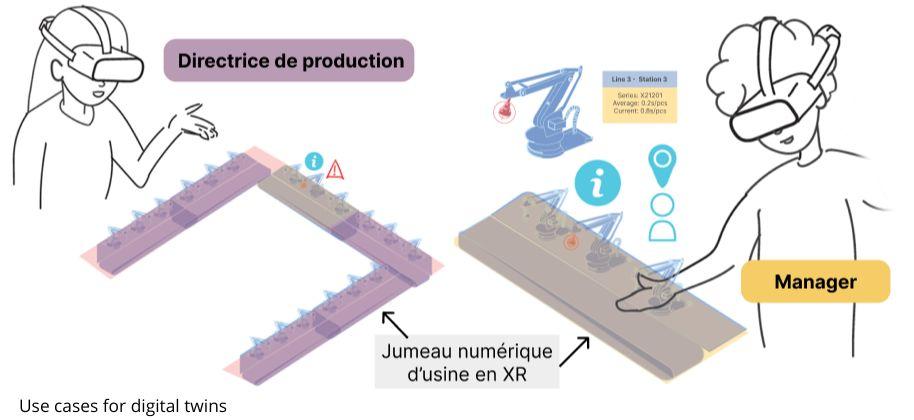
However, data security remains a major issue. The industrial environment imposes strict constraints to protect sensitive information and regulate user access levels. SAFE-6G perfectly illustrates a scenario where network trust and security are crucial.
“When a problem is detected on a production line, the digital twin will report it and notify the users concerned. The latter will be able to connect to the application via the 6G network to assess the problem. This is a critical task involving highly confidential factory data. It is therefore very important that the system and network provide robust guarantees for users. Production line managers can therefore collaborate in real time in mixed reality to find a solution to the initial problem. Once they agree on a solution, they can implement it within the digital twin and the changes will then be reflected in the real factory,” explains Charles Bailly, a researcher at Immersion.
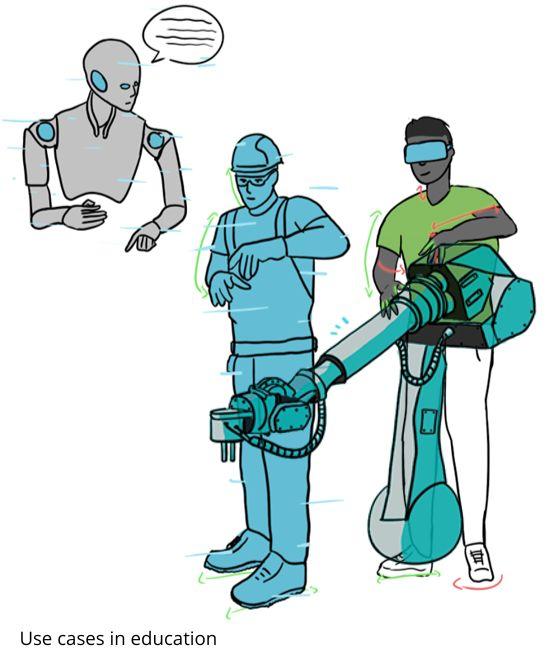
- Use case #2: Education and training
XR offers significant advantages for learning (as shown here at the Bordeaux University Institute of Technology): remote collaboration using 3D representations, scenario simulations, etc. In SAFE-6G, this use case focuses on training XR technicians. They can learn specific machine procedures while being guided in real time by a trainer via Shariiing XR.
“The goal is to combine mixed reality with artificial intelligence to facilitate training and skill development for factory technicians on various technical procedures. To do this, the instructor begins by recording the desired procedure on the actual machine. Once technicians are connected to the application and have adjusted the 6G network configuration, they can view the recorded procedure in mixed reality and thus reproduce it step by step to learn it by alternating between the real and virtual worlds. The instructor can directly assist technicians during training, as the Sharing XR module designed by Immersion allows them to view what the technicians are seeing in real time and guide them in case of difficulty. When the instructor is busy with another member of the group, the technician can call on this AI,” explains Julien Castet, Director of Research and Innovation at Immersion.
User privacy and device security are paramount. Protection against cyber-physical risks, such as the manipulation of thermal feedback gloves (e.g., Weart gloves) or machines during on-site augmented reality training, is essential. It is also crucial to ensure that only registered technicians can take the training and obtain certification.
Technical challenges: managing the complexity of data and devices
Immersion faces several challenges. On the one hand, the digital factory twin involves data volumes and 3D models that are more complex than current standalone XR headsets can handle. The solution: use Nvidia’s CloudXR to run Unity applications on a computer and stream the rendering to the headsets.
On the other hand, current XR headsets are not directly compatible with 6G networks. Immersion has therefore stepped up discussions and testing with partners such as NCSRD, a Greek research team specializing in 6G.
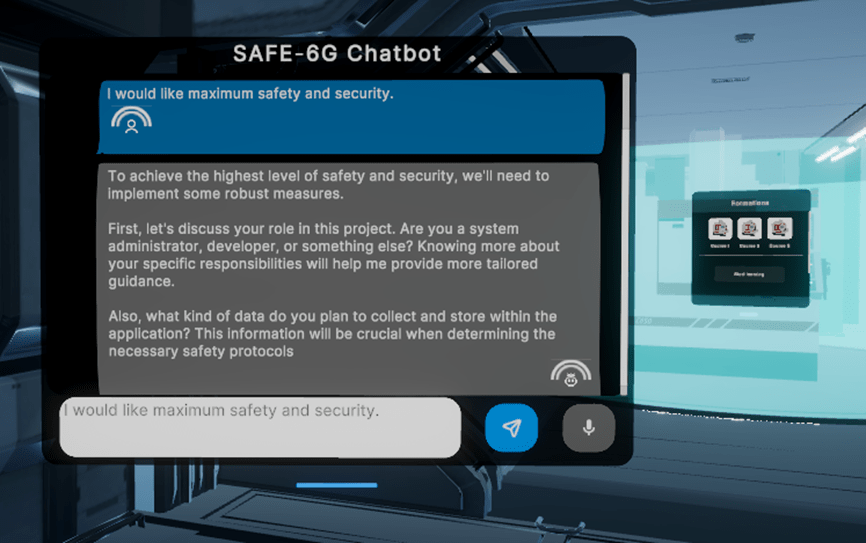
Progress and prospects: XR prototypes and integrations

After the initial phases, Immersion iteratively designed the two use cases and advised network experts on their specific needs. Unity prototypes for each use case were developed, accompanied by Metaverse Manager, a Python component that allows interaction with applications and communication with the SAFE-6G architecture via APIs.
The development phase is underway and an initial integration with the INFOLYSIS chatbot, another project partner, is up and running. The next steps will be to integrate the final versions of the components and carry out tests on the 6G networks deployed at the consortium partners’ sites.
Are you interested in the future of this project and would like to learn more? Sign up for our newsletter so you don’t miss a thing.
Would you like to involve us in your future research project? Visit our Research & Development page or contact us.


